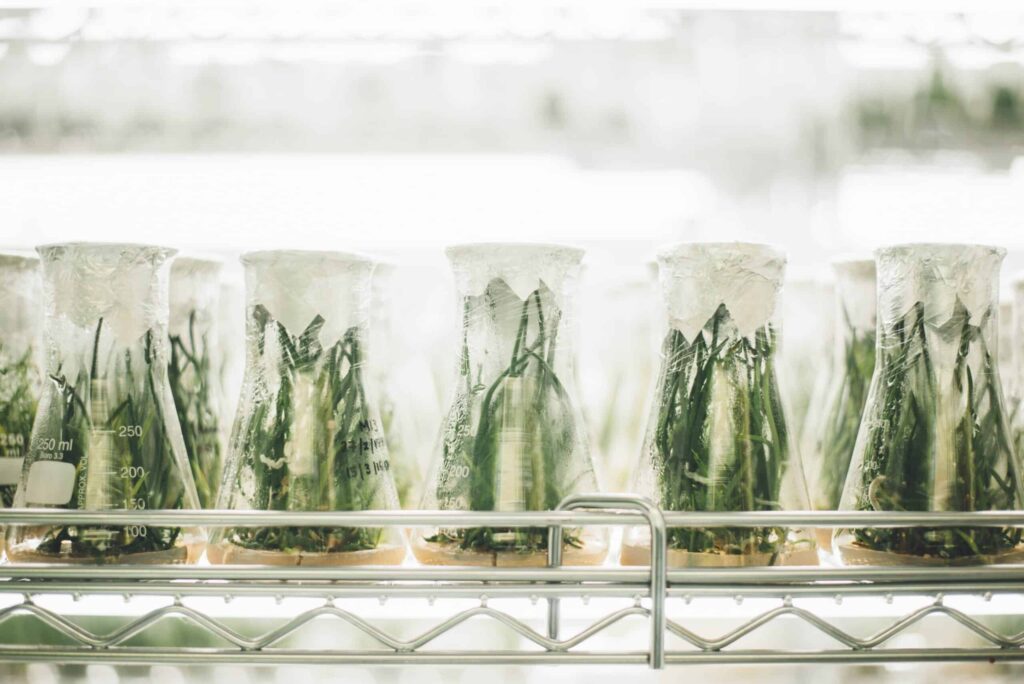 I’ve had many educators ask me What order should I use to grow my plants for my classroom garden?
I’ve had many educators ask me What order should I use to grow my plants for my classroom garden?
But the real question should be, Should I put multiple plant varieties in the same tower?
The answer to that one is pretty easy: in a perfect world, you shouldn’t.
But this doesn’t mean that you can’t. If you are going to plant multiple varieties in your tower, there is a structure you should follow. In this post, we will discuss why it is better to plant one variety of plant in your towers, and how to bring a method to your madness if you choose otherwise.
Sticking to one crop will simplify your life!
Although it can be tempting to fill your tower with a variety of plants, it is better to plant only one type of plant for several reasons that all make life easier for you. The three main reasons are:
- timing
- varying nutritional and water requirements
- better overall results
Plants have different gestation periods, growth rates, and life-cycles.
Because of this, different plant varieties will take different amounts of time to get started. You can run into problems planting when some varieties are ready to be transplanted into the ZipGrow towers, and others are not. In addition, once the plants are in the tower, they will reach maturity at different times, causing you trouble when you are ready to harvest or replant. By only planting one type of plant, you eliminate these timing problems.
Plants also have varying nutritional and water requirements.
 This means that some plants will absorb the water and nutrients you provide at different rates. If you plant a variety, some plants will choke each other out. For example, if you plant tomatoes (which tend to be water hogs) with something like parsley, the tomatoes will quickly begin to choke the parsley out. The tomatoes will take most of the water, nutrients, light, and growing space. Instead, just pick one plant and the resources will be distributed evenly.
This means that some plants will absorb the water and nutrients you provide at different rates. If you plant a variety, some plants will choke each other out. For example, if you plant tomatoes (which tend to be water hogs) with something like parsley, the tomatoes will quickly begin to choke the parsley out. The tomatoes will take most of the water, nutrients, light, and growing space. Instead, just pick one plant and the resources will be distributed evenly.
You will have better overall results if you choose to only plant a single plant species in your tower. Your plants will grow at a similar pace, absorb nutrients in equal levels, and share the space evenly. As a result, your plants will require less management from seed to harvest. And remember, you can always get a variety by replanting your tower with a different plant type next time!
If you have your heart set on variety, at least do it right.
If you are determined to plant a variety in your tower, or perhaps even required (maybe for a grant), you will have the most success if you follow the best practices outlined below.
Plant the heaviest plants and the water hogs toward the bottom.
Gravity plays a large role in vertical gardening. Your crop’s physical weight will drag them down, so you’ll want to plant the heaviest plants at the bottom of the tower where they have more support and so that other plants will not be overshadowed.
 Tomatoes are an example of a plant that should be planted near the bottom of the tower.
Tomatoes are an example of a plant that should be planted near the bottom of the tower.Plant water hogs at the bottom of the tower as well to give the other plants the chance to absorb the necessary levels of water before the water hogs take their share. Conveniently, most water hogs are also heavier and larger.
Position plants with similar nutrient requirements near each other.
As discussed above, different plants have different nutrient requirements. You can help a variety of plants grow better together by positioning them so that they absorb nutrients at similar levels. Check the seed packet or do a little research for this information.
Many of you educators wish to plant multiple crops to make a more interesting experience for your students, to increase your teaching opportunities, or to appease your school or grant requirements. We understand that most of you are going to plant a variety of plants in your tower. Either way, we want to see you succeed, and if you follow the general practices above, you’re on the right track.
Now it time to start your seeds. Check out our blog post on how to start seeds.






